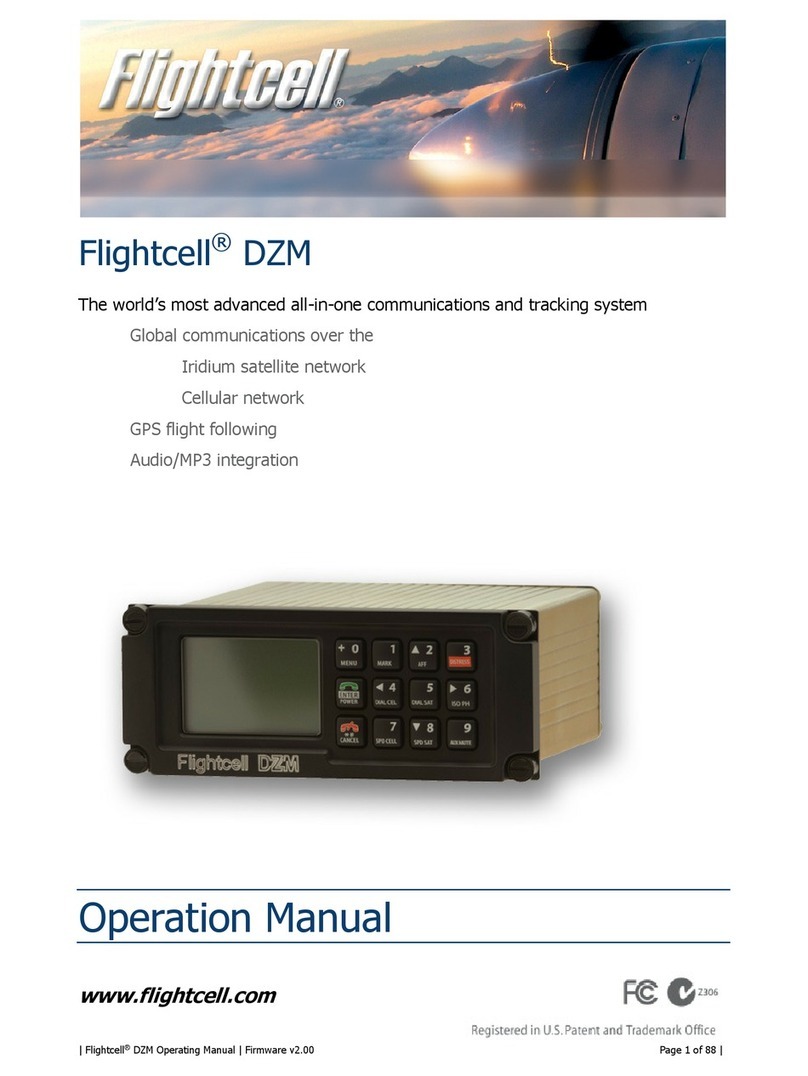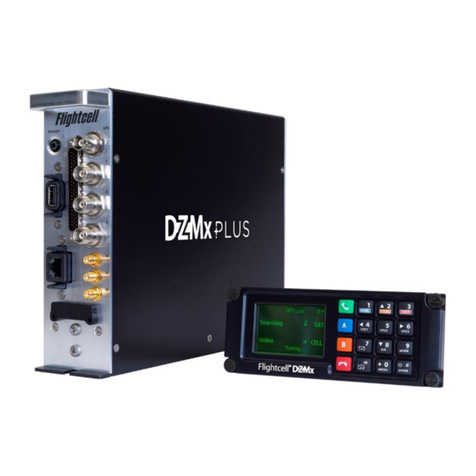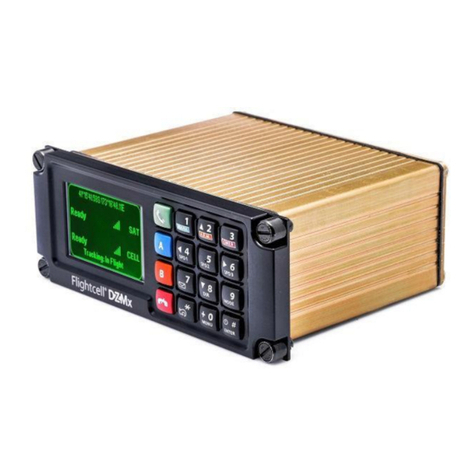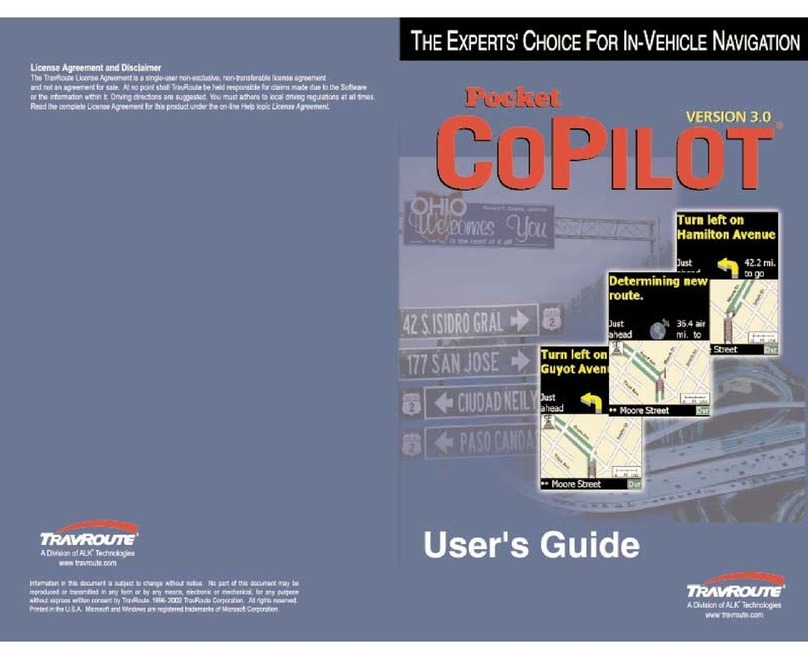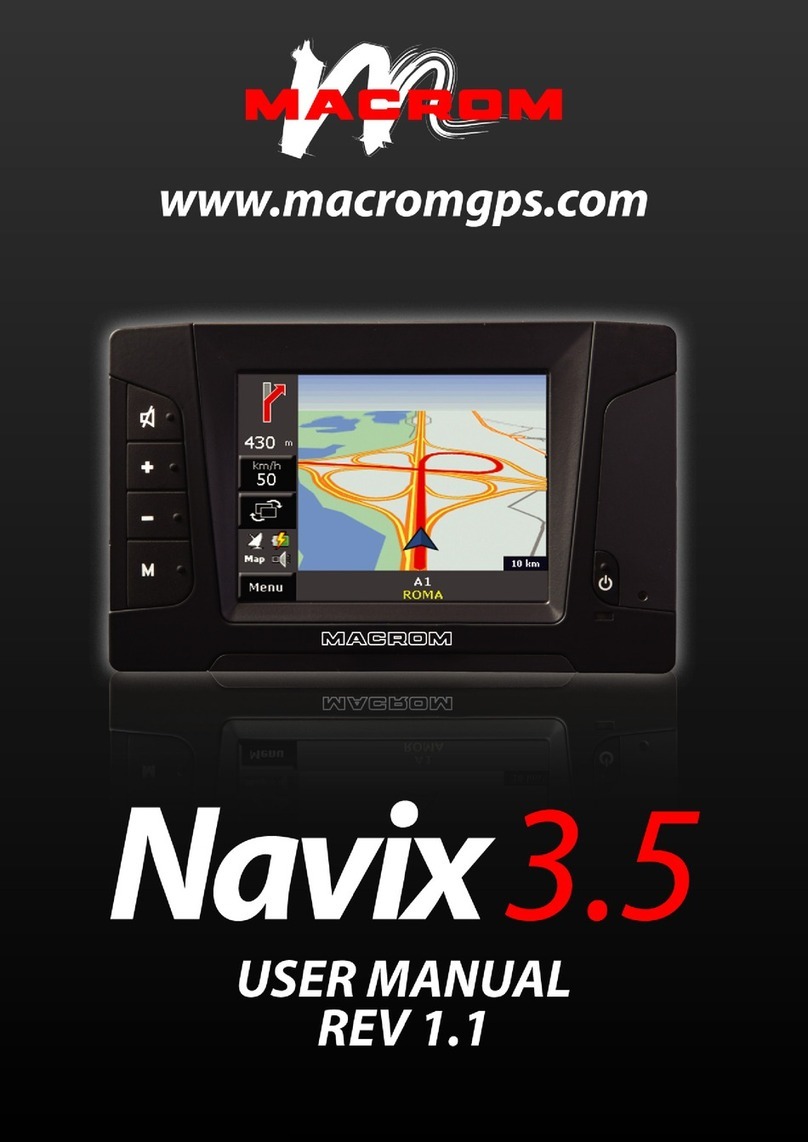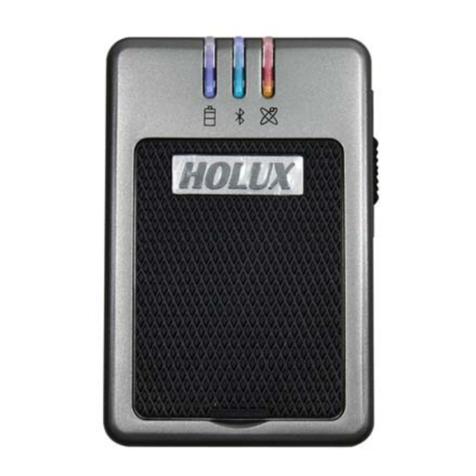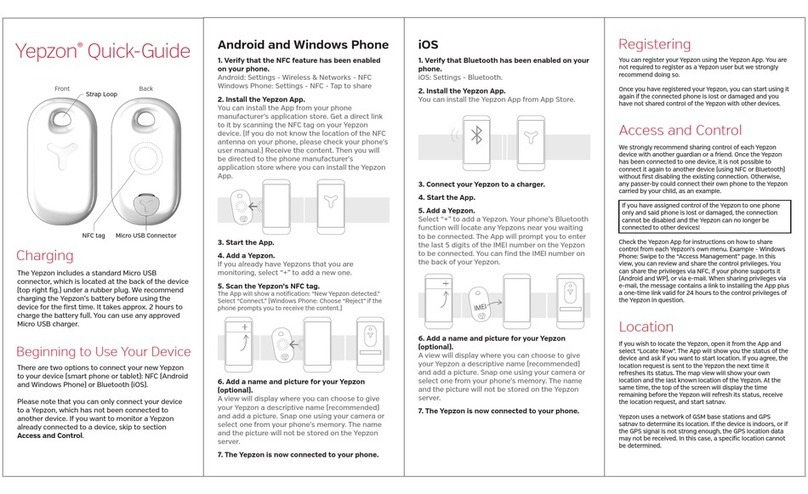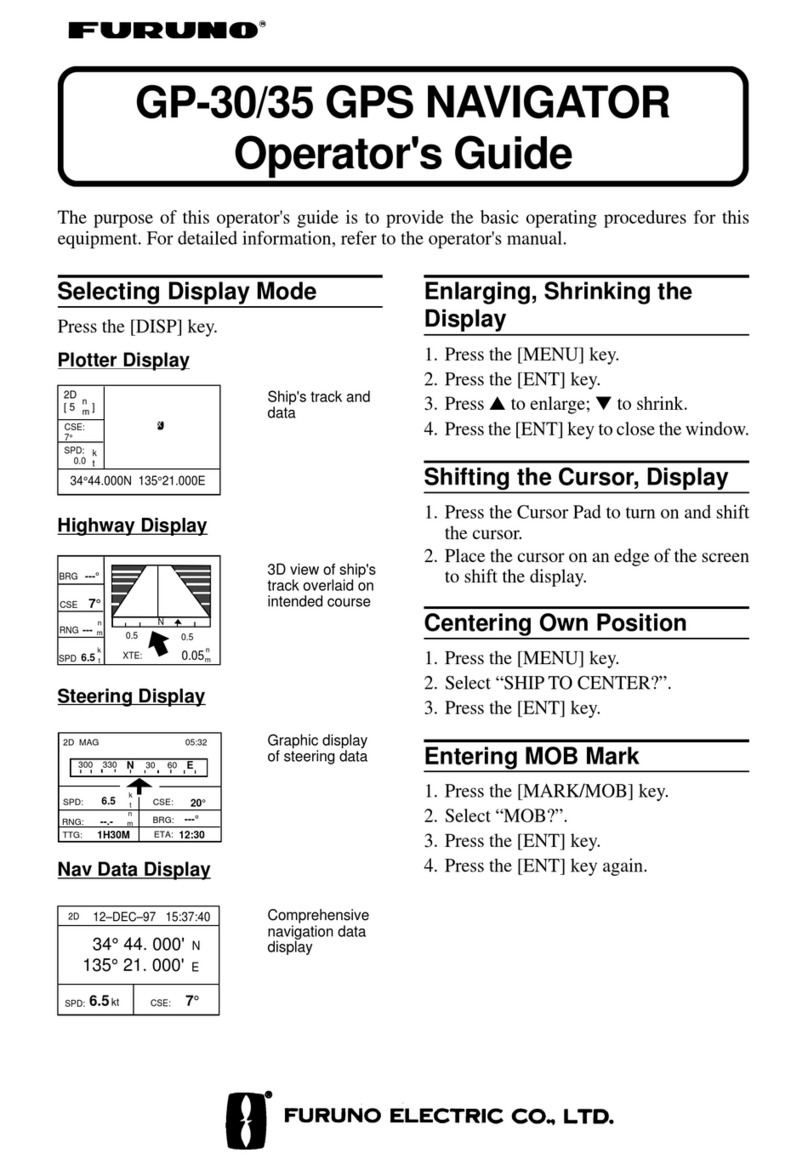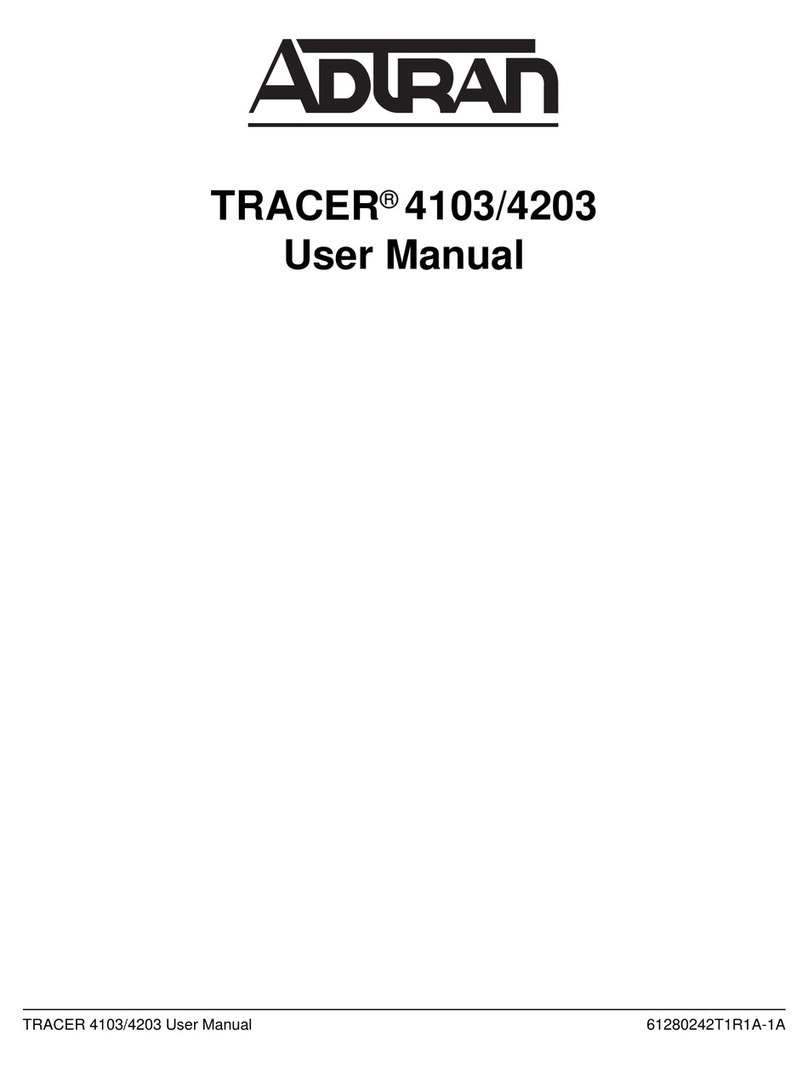Flightcell DZMx User manual

MAN_DZ4_001 Rev 25.0 Effective Date: 01 Jun 2020
Flightcell International Ltd
DZMx Installation Manual
Firmware Version 3.5.0

Except as expressly provided below, no part of this document may be reproduced, copied, transmitted, disseminated,
downloaded, or stored in any storage medium, for any purpose other than that which Flightcell International has provided this
document for. Any electronic or printed copy of this document or any revision must contain the complete text of this copyright
notice. Any unauthorised commercial distribution of this document or any revision hereto is strictly prohibited. Information in this
document is subject to change. Document users are responsible for ensuring printed copies are valid prior to use.
© Copyright 2020 Flightcell International Ltd –All Rights Reserved
| Flightcell® DZMx Installation Manual Page 2of 48 |
MAN_DZ4_001 Rev 25.0 Effective Date: 01 Jun 2020
REVISIONS & APPROVAL
Revision
Effective Date
Approved By
Reasons for Change
1.0
05 Aug 2013
James Mace
New issue
2.0
18 Nov 2013
James Mace
Revised manual
4.0
05 Dec 2013
James Mace
Updated for firmware 0.4.2-5
5.0
20 Jan 2014
James Mace
Correct error in descriptions of D25 connectors.
Some formatting enhancements
6.0
28 Feb 2014
James Mace
Update manual for 3G data.
Minor menu changes
Some other corrections to menu drawings and changes.
7.0
01 Aug 2014
James Mace
Updated Installation and Configuration Manual
8.0
27 Aug 2014
James Mace
Manual change
•Configuration of multiple remote heads.
•Instructions for installation and activation of call
annunciator light.
•New altitude and high speed GPS settings.
9.0
05 Jan 2015
James Mace
Manual updated for:
•Export and import of phonebook
•Downloading logfiles
11.0
25 Apr 2015
James Mace
DZMx firmware release 1.12.x
13.0
29 Apr 2016
James Mace
DZMx firmware release 2.7.0
14.1
20 May 2016
James Mace
DZMx firmware release 2.7.0
15.0
07 Jul 2016
James Mace
DZMx firmware release 2.8.0
16.0
26 Jul 2016
James Mace
DZMx firmware release 2.8.1
17.0
09 Dec 2016
James Mace
DZMx firmware release 2.11.0
18.0
07 Mar 2017
James Mace
DZMx firmware release 2.13.1
19.0
14 Jul 2017
James Mace
DZMx firmware release 2.14.0
20.0
29 Nov 2017
James Mace
DZMx firmware release 2.17.0
21.0
01 Jun 2018
James Mace
DZMx firmware release 2.18.1
21.1
27 Jul 2018
James Mace
DZMx firmware release 2.19.0
23.0
20 Dec 2018
James Mace
DZMx firmware release 3.1
24.0
01 Apr 2019
James Mace
DZMx firmware release 3.2
25.0
01 Jun 2020
James Mace
DZMx firmware release 3.5.0
Major change to the DZP_04 part number to include a 4
to 9-digit dash number e.g. DZP_04-xxx-xxxx.

| Flightcell® DZMx Installation Manual Page 3of 48 |
MAN_DZ4_001 Rev 25.0 Effective Date: 01 Jun 2020
CONTENTS
SECTION 1: INTRODUCTION.............................................................................................................. 4
APPLICABILITY OF THIS MANUAL ................................................................................................................. 4
DOCUMENTATION ...................................................................................................................................... 4
SECTION 2: DZMXEQUIPMENT.......................................................................................................... 5
CONNECTORS ........................................................................................................................................... 5
ETHERNET/USB CONNECTOR MODULE ...................................................................................................... 5
SECTION 3: DZMX SPECIFICATIONS ................................................................................................. 6
VERSIONS AND PART NUMBERS ................................................................................................................. 6
DIMENSIONS ............................................................................................................................................. 7
ELECTRICAL.............................................................................................................................................. 7
DZMX WI-FI AND BLUETOOTH TRANSMIT POWER ....................................................................................... 8
ENVIRONMENTAL QUALIFICATIONS ............................................................................................................. 8
SECTION 4: INSTALLATION ............................................................................................................... 9
MOUNTINGTHEDZMX................................................................................................................................ 9
DZMX WIRING GUIDE................................................................................................................................ 9
INSTALLING A DZMX REMOTE HEAD......................................................................................................... 15
DZMXANTENNAS ....................................................................................................................................16
SECTION 5: CONFIGURATION ......................................................................................................... 17
CONFIGURING THE DZMX........................................................................................................................ 17
AUDIO INSTALLATION AND CONFIGURATION ..............................................................................................20
MODEM CONFIGURATION......................................................................................................................... 23
BACKLIGHTING ........................................................................................................................................25
DZMX WIFI............................................................................................................................................27
DZMX BLUETOOTH™...............................................................................................................................27
DZMX TRACKING ....................................................................................................................................29
DZMX INPUTS AND OUTPUTS................................................................................................................... 35
CONFIGURINGDZMXDATA....................................................................................................................... 37
DZMX DATA LOGGING............................................................................................................................. 38
DZMX EMAIL OUTBOX............................................................................................................................. 39
RECORDING AND TRANSMITTING MAINTENANCE DATA...............................................................................40
SECTION 6: DZMX APPLICATIONS .................................................................................................. 41
DZMX APPLICATIONS AND LICENCES .......................................................................................................41
DZMX APPLICATIONS ..............................................................................................................................41
SECTION 7: MAINTENANCE, DIAGNOSTICS AND SUPPORT ......................................................... 42
FIRMWARE UPGRADES ............................................................................................................................42
DIAGNOSTICS.......................................................................................................................................... 43
FLIGHTCELL REMOTE ASSISTANCE...........................................................................................................43
APPENDIX 1. CONNECTOR KITS PROVIDED WITH THE DZMX AND ASSOCIATED PARTS. .................................45
CONTACTDETAILS ...................................................................................................................................47
WARRANTY.............................................................................................................................................48

| Flightcell® DZMx Installation Manual Page 4of 48 |
MAN_DZ4_001 Rev 25.0 Effective Date: 01 Jun 2020
Section 1: Introduction
This manual provides information on installation and configuration of the Flightcell DZMx. This manual has
been updated for DZMx firmware release 3.5.0.
Applicability of this Manual
This manual applies to the Flightcell DZMx part number DZP_04 revisions 3.0 and 4.0.
•Rev. 3.0 operates firmware 3.x.x and has the DZP_04 part number with a 4 to 6-digit dash number e.g.
DZP_04-xxx.
•Rev. 4.0 has a major change to the DZP_04 part number which now has 4 to 9-digit dash number e.g.
DZP_04-xxx-xxxx. This revision operates firmware 3.5.0.
Documentation
Comprehensive documentation for the DZMx is available on the Flightcell website at
www.flightcell.com/resources. This includes:
»DZMx wiring diagrams (interconnect drawings)
»DZMx mechanical assembly
»Antenna specifications and drawings
»Manuals
»Certification documentation.

| Flightcell® DZMx Installation Manual Page 5of 48 |
MAN_DZ4_001 Rev 25.0 Effective Date: 01 Jun 2020
Section 2: DZMx Equipment
The DZMx should be inspected when unpacked to check for any visible damage or missing components.
Connectors
Connector kits are supplied with the DZMx and with associated parts including the DZMx Remote Head and
antennas.
The content of the connector kits depends on the version of the DZMx. Details of the connector kit contents are
provided in Appendix 1.
Ethernet/USB Connector Module
A Flightcell USB/Ethernet connector module is provided with each DZMx. It is used for terminating the DZMx
USB and Ethernet connections. It is compulsory that USB and Ethernet connections are installed on the
aircraft. If the USB/Ethernet connections are not installed into the aircraft, it will severely limit troubleshooting
and support capabilities.
The connector module is available with either D-type (commercial) or D38999 (military connectors. The connector
module and its connector kit are provided in the DZMx connector kit (See Appendix 1 for details).

| Flightcell® DZMx Installation Manual Page 6of 48 |
MAN_DZ4_001 Rev 25.0 Effective Date: 01 Jun 2020
Section 3: DZMx Specifications
Versions and Part Numbers
The DZMx can be built in a wide range of configurations, with a range of hardware options. The DZMx part
number is DZP_04. The 3 - 7 digit dash number immediately following DZP_04 designates the variant of the
DZMx.
The available variants may change from time to time. The options available to build up the different variants
are:
»Installed modems (see "Modem Configuration" on page 24 for a list of supported modems)
»Faceplate options:
»DZUS (5½”) mount
»GA (6¼”) mount
»Type of main connector
»Standard - two D25 connectors
»Military - one milspec D38999 connector
»NVIS compliance
»NVIS-B
»NVIS-A / Mil Std 3009 (only available on versions with military connectors)
»Embedded Wi-Fi and Bluetooth capability
»Expansion cards:
»ARINC 429
»Input Expansion Card (providing seven additional general purpose inputs)
»Second Ethernet

| Flightcell® DZMx Installation Manual Page 7of 48 |
MAN_DZ4_001 Rev 25.0 Effective Date: 01 Jun 2020
Dimensions
Dimension
DZUS
mount
GA mount
Faceplate Width
146mm
158mm
Extrusion Width
126mm
126mm
Faceplate Height
57mm
60mm
Extrusion Height
54mm
54mm
Depth (from Front face to
Rear face)
110mm
110mm
Electrical
Part/Item
Parameter
Value
Power
Input Voltage
12-32VDC
Supply Current
Up to 1A @ 28VDC
ICS to DZMx
Input Levels (VRMS)
20mV to 1.15V, adjustable
775mV nominal
Input Impedance
600Ω
Microphone Bias
Voltage
12V via 2.2kΩ
Output Levels (VRMS)
Up to 5V, adjustable
DZMx to ICS
775mV nominal
Output Impedance
150Ω
Backlighting
Input Control
0 to 28VDC
User calibrated High/Low set-points
Colour
Green 520nm. Designed for NVIS-B
compliance.
GPS
Antenna Bias
Voltage
5V
Antenna Current
Up to 100mA
Sensitivity
-162dBm (with Flightcell Antenna)
Time to First Fix
26s
General Purpose
Inputs
Inputs Levels (Vin)
0 to 28VDC
General Purpose
Outputs
Levels (Vout)
0 to 32VDC
Max Current (lout)
500mA

| Flightcell® DZMx Installation Manual Page 8of 48 |
MAN_DZ4_001 Rev 25.0 Effective Date: 01 Jun 2020
DZMx Wi-Fi and Bluetooth Transmit Power
WiFi
Tx power (dBm)
17.3
Antenna gain (dBi)
2.6
Total power (dBm)
19.9
Total power (mW)
97.7
Bluetooth
Tx power (dBm)
10.0
Antenna gain (dBi)
2.6
Total power (dBm)
12.6
Total power (mW)
18.2
Environmental Qualifications
The DZMx is tested against and complies with RTCA-DO160G.
Details of the DO160G compliance are provided in the DZMx Declaration of Design and Performance (DDP),
document TEC_DZ4_031, Issue 7 for DZMx Revision 3 and Issue 8 for DZMx Revision 4.

| Flightcell® DZMx Installation Manual Page 9of 48 |
MAN_DZ4_001 Rev 25.0 Effective Date: 01 Jun 2020
Section 4: Installation
Mounting theDZMx
The DZMx should be mounted where the flight crew or radio operator have a clear view of the display and can
easily use the keypad.
The DZMx LCD is designed for optimum readability when viewed at angles between 60° above the display to
20° below. Avoid mounting the unit where the display will be viewed at an oblique angle, as it may not be
clearly readable. It is preferable to mount the DZMx to minimise sunlight shining on the display. The ideal location
is in the panel where it is readily viewed by, and accessible to the pilot or pilots.
If the DZMx is installed in the pedestal, for ease of use, it is preferable to install it as near to the front of the
pedestal as possible.
Refer to the following mechanical drawings (latest versions are available from the Flightcell website at
www.flightcell.com/resources)
for dimensions and mounting details of for the DZMx:
»
DZUS/GA Mech Assembly
, for versions with DZUS front plate and D25 main connectors
»
GA/GA Mech Assembly
, for versions with GA front plate and D25 main connectors
»
DZUS/Mil Mech Assembly
, for military versions with DZUS front plate and D38999 main connectors.
CAD solid model files are also available on request from Flightcell International. Contact [email protected] for
more information.
DZMx Wiring Guide
Refer to the following wiring diagrams for the Flightcell DZMx and associated equipment (available from
www.flightcell.com/resources:
»Civilian Wiring Diagrams for versions of the DZMx with D25 main connectors
»Military Wiring Diagrams for versions of the DZMx with D38999 main connectors.
Necessary Installations
The following are essential parts of the DZMx installation:
»"Power Supply," below
»"Ethernet/USB Connector Module" below
»"Audio Configuration", see page 20
»"DZMx Antennas", see page 16
»"SIM Cards", see page 24.
Optional Installations
The following are optional parts of the installation.
»"DZMx Remote Head", see page 15
»"Backlighting control ", see page 25
»"DZMx Inputs/Outputs", see page 35
Power Supply
The DZMx unit and other components require aircraft DC power. Operating range is 12-32VDC. It is
recommended that the DZMx be connected to the emergency (primary) power bus on the aircraft. This is to
ensure successful operation of tracking (including engine start/stop data) and emergency calls.
When operating on a nominal 28V supply, circuit breakers or fuses of the following rating should be used
between DZMx system components and the power supply:
»A 2 amp circuit breaker/fuse is recommended to protect the DZMx system
»A 1 amp circuit breaker/fuse is recommended to protect an external modem (Iridium or cellular) module, if
installed

| Flightcell® DZMx Installation Manual Page 10 of 48 |
MAN_DZ4_001 Rev 25.0 Effective Date: 01 Jun 2020
»A 1 amp circuit breaker/fuse is recommended to protect a Flightcell Iridium phone cradle, if installed
If combining two or more circuits on a single circuit breaker, a 3A circuit breaker/fuse is recommended.
Ethernet/USB Connector Module
A Flightcell USB/Ethernet connector module (pictured) is supplied in
the DZMx connector kit with the DZMx for terminating its USB and
Ethernet connections.
Versions are available with either a D-type connector (part number
IDP_00013) or D38999 connector (part number IDP_00012) . Mating
connectors for the wiring loom are included with the connector module.
The Ethernet/USB connector module should always be installed as it
provides the following functions:
Ethernet –provides a connected device access to the DZMx data
connections and to DZMx Connect.
USB –required for firmware upgrades and downloading diagnostics.
The cable run to the USB connector should be limited to 5m of proper USB Cable to ensure compliance
with the USB 2.0 cable delay specification.
An alternative USB or Ethernet socket may be used if preferred, so long as the wiring guidelines above are
followed.
Fabricating Wiring Harnesses
All wiring should be carried out with aviation specification fireproof cable.
Screened cable should be used where indicated in the wiring diagrams. Where cable screen connections are
not explicitly shown, they should be left unterminated.
The following minimum wiring specification is recommended:
»Power supply - 22 AWG stranded (0.325mm2)
»Other cabling - 24 AWG stranded (0.205mm2).
It is recommended that enough slack be left in the main cable to enable the DZMx to be partially removed
from the aircraft panel for service or to exchange the Iridium and/or cellular SIM card.
Grounding and Shielding Terminations
The DZMx provides a chassis ground connection on the primary connector. This can be connected to a local
aircraft chassis ground point if required. If the DZMx is mounted in a DZUS rack, the housing is grounded to
the DZUS rails via the DZUS connectors and contact between the front panel metalwork and the DZUS rails.
If the DZMx has a GA front panel it is recommended to bond the DZMx to aircraft chassis ground via either the
hardpoint on the rear of the DZMx or the chassis ground pin on the primary connector.
Installing Data Ports
The DZMx has several data connections wired off the main or secondary connector:
»Ethernet –used for connecting a PC or other Ethernet-capable device
»USB –used for firmware upgrades and connecting USB-only devices
»RS232 –available for serial data connections to legacy devices and as a debug port
»RS422/RS485 –used for serial data connections, and connection to one or more DZMx Remote Heads.
Two additional data connections are available as options:
»ARINC429 –used to send and receive over the aircraft ARINC429 data bus.
»Second Ethernet –used to provide a second ethernet connection.
Note: It is essential that a USB and Ethernet connection is installed in an accessible location.

| Flightcell® DZMx Installation Manual Page 11 of 48 |
MAN_DZ4_001 Rev 25.0 Effective Date: 01 Jun 2020
ConnectorPinouts(civilian versions)
Refer to the Civilian wiring diagrams for the Flightcell DZMx and associated equipment (available from the
Flightcell Support website).
The standard civilian variant of the DZMx uses two D25 connectors for its main connectors. Refer to the figure
below for the layout of the DZMx backplate.
DZMx backplate, standard civilian variant
Primary Connector
Connector type: DB25M
Pin No
Function
Direction
Notes
1
POWER GROUND
Ground
DC power supply ground
2
DC SUPPLY POSITIVE
Power
DC power supply
3
I/O GND
Ground
4
GENERAL PURPOSE INPUT 2
Input
5
GENERAL PURPOSE INPUT 3
Input
6
RS485 Tx+
Output
7
RS485 Rx-
Input
8
AUDIO FROM DZM1 LO
Output
LO audio output to ICS 1
9
MIC TO DZMx 1 HI
Input
Unbiased/biased (configurable)
10
MIC TO DZMx 2 HI
Input
Unbiased/biased (configurable)
11
POTS TIP
I/O
For optional telephone handset
12
AUX DATA TX
Input
13
AUX DATA Rx
Output
14
CHASSIS GND
Ground
Internally connected to DZMx Chassis
15
GENERAL PURPOSE INPUT 5
Input
Lighting dimmer input (optional)
16
GENERAL PURPOSE INPUT 1
Input
17
GND
Ground
18
GENERAL PURPOSE INPUT 4
Input
19
RS485 Tx-
Output
20
RS485 Rx+
Input
21
AUDIO FROM DZM1 HI
Output
HI audio output to ICS 1
22
MIC TO DZMx 1 LO
Input
Return for audio input from ICS 1
23
MIC TO DZMx 2 LO
Input
Return for audio input from ICS 2
24
POTS RING
I/O
For optional telephone handset
Note: DZMx variants with Iridium 9603 (SBD) modems have an additional SMA female connector.

| Flightcell® DZMx Installation Manual Page 12 of 48 |
MAN_DZ4_001 Rev 25.0 Effective Date: 01 Jun 2020
25
AUX DATA GND
Ground
D25
shell
CHASSIS GND
Ground
Secondary Connector
Connector type: DB25F
Mating Part: M24308/4-3F (or equivalent)
Pin No
Function
Direction
Notes
1
AUDIO FROM AUX TXCVR HI
Input
2
AUDIO FROM AUX TXCVR LO
Input
3
AUDIO FROM DZMx 2 HI
Output
HI audio output to ICS 1
4
OUTPUT 1A
Output
Isolated output 1 Terminal A
5
OUTPUT 2A
Output
Isolated output 2 Terminal A
6
GPIO3
Input
Reserved for Optional Capabilities
7
USB VBUS
Power
8
USB D+
I/O
9
USB D-
I/O
10
GPIO5
Output
Reserved for Optional Capabilities
11
GPIO6
Output
Reserved for Optional Capabilities
12
ETH 10/100 TX+
Output
13
ETH 10/100 TX-
Output
14
AUDIO TO AUX TXCVR HI
Output
15
AUDIO TO AUX TXCVR LO
Output
16
AUDIO FROM DZM2 LO
Output
LO audio output to ICS 2
17
OUTPUT 1B
Output
Isolated output 1 Terminal B
18
OUTPUT 2B
Output
Isolated output 2 Terminal B
19
GPIO4
Input
Optional: ARINC-429 RX Channel 2 -
20
USB GND
Ground
21
GPIO7
I/O
Reserved
22
GPIO1
Input
Reserved
23
GPIO2
Input
Reserved
24
ETH 10/100 RX-
Input
25
ETH 10/100 RX+
Input
D25
shell
CHASSIS GND
Ground

| Flightcell® DZMx Installation Manual Page 13 of 48 |
MAN_DZ4_001 Rev 25.0 Effective Date: 01 Jun 2020
Connector Pinouts (military versions)
Refer to the Military wiring diagrams for the Flightcell DZMx and associated equipment (available from the
Support page of the Flightcell website).
The standard military variant of the DZMx uses a single D38999 connector. Refer to the figure below for the
layout of the DZMx backplate.
DZMx backplate, military variant
Military Connector
Connector type: D38999/24WE-35PN
Mating part: D38999/26WE-35SN (or equivalent)
Pin No
Function
Direction
Notes
1
ETH 10/100 TX-
Output
2
ETH 10/100 RX+
Input
3
ETH 10/100 RX-
Input
4
AUDIO FROM DZMx 2
LO
Output
LO audio output to ICS 2
5
ETH 10/100 TX+
Output
6
SHIELD
Shield
Spare Shield Connection
7
SHIELD
Shield
Spare Shield Connection
8
CHASSIS GND
Ground
9
GPIO5
Output
Reserved for Optional
Capabilities
10
AUDIO FROM DZMx 2
HI
Output
HI audio output to ICS 2
11
AUDIO TO AUX TXCVR
HI
Output
12
AUDIO FROM DZMx 1
HI
Output
HI audio output to ICS 1
13
OUTPUT 1B
Output
Isolated output 1
Terminal B
14
OUTPUT 1A
Output
Isolated output 1
Terminal A
15
OUTPUT 2B
Output
Isolated output 2
Terminal B
16
GPIO6
Output
Reserved for Optional
Capabilities
17
POWER GROUND
Ground
DC power supply
ground
18
AUDIO TO AUX TXCVR
LO
Output
19
AUDIO FROM DZM1 LO
Output
LO audio output to ICS 1
20
RS485 RX+
Input
21
RS485 RX-
Input
22
GPIO2
Input
Reserved for Optional
Capabilities
23
OUTPUT 2A
Output
Isolated output 2
Terminal A
24
GPIO7
I/O
Reserved for Optional
Capabilities
25
DC SUPPLY VOLTAGE
Input
DC power supply
26
MIC TO DZMx 2 HI
Input
HI audio input from ICS
2
Note: Variants with Iridium 9603 (SBD) modems also have an SMA female connector.

| Flightcell® DZMx Installation Manual Page 14 of 48 |
MAN_DZ4_001 Rev 25.0 Effective Date: 01 Jun 2020
Pin No
Function
Direction
Notes
27
LO audio input from ICS
2
28
RS485 TX+
Output
29
RS485 TX-
Output
30
GPIO1
Input
Reserved for Optional
Capabilities
31
USB D+
I/O
32
POTS RING
I/O
For optional cabin phone
33
AUDIO FROM AUX
TXCVR LO
Input
34
MIC TO DZMx 1 LO
Input
LO audio input from ICS
1
35
SHIELD
Shield
Spare Shield Connection
36
SHIELD
Shield
Spare Shield Connection
37
AUX DATA GND
Ground
38
USB VBUS
Power
39
USB D-
I/O
40
POTS TIP
I/O
For optional cabin phone
41
AUDIO FROM AUX
TXCVR HI
Input
42
MIC TO DZMx 1 HI
Input
HI audio output from ICS
1
43
SHIELD
Shield
Spare Shield Connection
44
AUX DATA TX
Input
45
AUX DATA RX
Output
46
USB GND
Ground
47
GPIO3
Input
Reserved for Optional
Capabilities
48
GPIO4
Input
Reserved for Optional
Capabilities
49
I/O GND
Ground
50
GENERAL PURPOSE
INPUT 2
Input
51
GENERAL PURPOSE
INPUT 1
Input
52
GENERAL PURPOSE
INPUT 5
Input
Optional: Lighting
dimmer input
53
GENERAL PURPOSE
INPUT 3
Input
54
GENERAL PURPOSE
INPUT 4
Input
55
I/O GND
Ground

| Flightcell® DZMx Installation Manual Page 15 of 48 |
MAN_DZ4_001 Rev 25.0 Effective Date: 01 Jun 2020
Installing a DZMx Remote Head
A Flightcell DZMx Remote Head is a remotely located control panel for the DZMx, with identical display and
keypad. One or two remote heads may be installed to provide other crew or mission specialists with full remote
control of the DZMx.
Wiring the Remote Head
The remote head connects to the DZMx using the RS422/RS485 serial data connections. The remote head
also requires a 12-32VDC power supply. Two additional connections are a ground connection to the chassis,
and a lighting input for external lighting control. Backlighting of the DZMx and remote heads can be configured
individually, see page 32 for details on adjusting the brightness and the installing the external lighting input.
Refer to the Flightcell website at www.flightcell.com>resources for the wiring diagram of the remote head and
DZMx.
Configuring the DZMx for a Remote Head
First, the DZMx needs to be configured to recognise the remote heads:
»Press MENU>Hardware Config>Head B Enable. Select On to enable, or Off to disable the remote head
»Press ENTER to save the setting
If a second remote head is installed, repeat these steps for Head C Enable.
Configuring the Remote Heads
The remote heads now need to be allocated a head ID so that the DZMx can identify each remote head.
»Press and hold the BACK key on the designated remote head for 2 seconds, then release Scroll down to
Advanced>Head ID
»Use the RIGHT and LEFT arrow keys to select the correct head ID (either Head B or Head C), then press
END to save.

| Flightcell® DZMx Installation Manual Page 16 of 48 |
MAN_DZ4_001 Rev 25.0 Effective Date: 01 Jun 2020
DZMx Antennas
Flightcell supplies a range of antennas, the choice of which will depend on DZMx modem configuration:
»Single Iridium modem: Use a Flightcell dual Iridium/GPS antenna
»Where the antenna needs to be certified to a TSO, part number: ANP_00043
»Where TSO certification is not required, ANP_00003.
»Dual Iridium modems: Use a Flightcell Iridium/GPS antenna, P/N ANP_00043, and a single Iridium
antenna, ANP_00045
»Single cellular modem: Use a Flightcell cellular antenna, P/N ANP_00033.
»Dual cellular modems: Use a Flightcell dual cellular antenna, P/N ANP_00031.
Installation of Iridium and GPS Antennas
Installation drawings for the above antennas are available at www.flightcell.com/resources.
The Flightcell Iridium/GPS antenna and Iridium antenna should be installed on the top of the aircraft where
it will have an unrestricted view of the sky, mounted as close to horizontal as possible. The following should be
considered when determining a mounting location:
»Maintain good separation from other antennas. Preferred separation is 750mm from L-band (GPS),TCAS
or transponder antennas, but a lesser separation can be applied if there is limited space on the aircraft
»On a helicopter, the antenna can be installed below the rotor blades, but avoid installing it close to the
rotor hub, as the hub and inner rotor can block the antenna’s view of the sky
»Keep coax cable lengths short to minimize attenuation of transmit and receive signals.
Installation of Cellular Antennas
A Flightcell cellular antenna should preferably be installed on the underside of the aircraft to provide best
connection to the cellular network. Typical location is below the cockpit to minimise antenna cable length. The
minimum recommended separation between the cell antenna and other antennas is 600mm.
Guidelines for Antenna Cables
Iridium antenna cables must be selected to keep signal loss within accepted levels. Total signal loss on the
Iridium connection between the DZMx or Iridium phone cradle and the antenna should not exceed 3dB at
1645MHz.
The maximum recommended length for different common antenna cable types is:
Cable Length
Cable Specification
Up to 3m
RG58C/U or RG400
Up to 6.5m
LMR200 or RG142A/U-9006 cellfoil
Up to 8m
RG213
Up to 17m
LMR400
Up to 26m
LMR600
It is recommended that the antenna cable be reduced to RG58 for the last 300mm to the DZMx to assist with
installation in the panel.
Antenna connectors on the DZMx and Flightcell antennas (as well as the supplied mating connectors) are
colour coded to reduce installation errors, as follows:
Antenna Type
Colour (as seen in the Pinout images)
Iridium
Red
Cellular
Green
GPS
Blue

| Flightcell® DZMx Installation Manual Page 17 of 48 |
MAN_DZ4_001 Rev 25.0 Effective Date: 01 Jun 2020
Section 5: Configuration
Configuring the DZMx
The DZMx can be configured using its user interface (keypad and display) or using the DZMx Connect
application. Most settings are available on both interfaces.
However, it is recommended that DZMx Connect is used to configure your DZMx and change its settings as it
is faster and provides a more intuitive interface than using the DZMx UI.
Use of the UI for configuration may be preferred in two cases where this provides real-time feedback on the
configuration:
»Adjusting audio settings
»Configuring the General Purpose Inputs.
Accessing Installation and Configuration Settings
Many of the DZMx configuration settings are hidden during normal operation. To access these settings, the
Installer Menu needs to be activated. The Installer Menu will remain active until the DZMx is next powered off.
Since this installation manual assumes that the Installer Menu has been activated, if a menu item indicated in
this manual cannot be found, ensure that the Installer Menu has been activated.
Configuring using DZMx Connect
DZMx Connect is a browser an application utility that is that can be used to configure the DZMx, including
changing settings and editing the DZMx phonebook and message library, as well as providing a range of other
functions. DZMx Connect is available as an iOS and Android application (available from the respective app
stores), or as a browser application on a PC.
It is highly recommended that DZMx Connect is used to alter your DZMx settings as it provides a more intuitive
interface than using the front panel. DZMx Connect also allows users to edit or import and export phonebooks,
edit the quick response messages and import/export DZMx settings files.
There are three ways to use DZMx Connect:
Hardwired Computer Connection
»Connect a computer to the DZMx Ethernet port
»Power up the DZMx and wait for it to fully initialise
Open a web browser, type in 192.168.4.1 in the address bar and press enter. The home screen of DZMx
Connect will open in the browser
If the DZMx has been allocated a fixed IP address, or the DZMx is set up as a DHCP client, then it is
necessary to enter this address (this could be, for example, 192.168.4.100). This IP address can be
determined by going to MENU>Diagnostics Menu>About DZMx.
Wireless Laptop Connection
»Power up the DZMx and wait for it to fully initialise.
»Check that WiFi is enabled. Look for a WiFi icon located at the top right-hand side of the DZMx
display. If the WiFi icon is not present it can be checked and enabled in one of three ways:
»Press and hold the MODE key until “Enabling WiFi”is displayed on the display. WiFi can also be
disabled with a subsequent press of the MODE key.
»Using the DZMx keypad, navigate to: MENU>Hardware Config>Wireless and Networks>WiFi
Enable and select Yes.
»Connect a PC or laptop to the DZMx via an Ethernet cable. Type 192.168.2.1 into a web browser
and navigate to Connectivity>WiFi and toggle the switch to ON.
»Open a web browser on the laptop and type in 192.168.2.1 then press enter; the home screen of DZMx
Connect will open within the browser.
Click here to watch a short video explaining the DZMx Connect capabilities (demonstrated on the app version).
Smart Device Connection
»Configure the smart device to connect to:

| Flightcell® DZMx Installation Manual Page 18 of 48 |
MAN_DZ4_001 Rev 25.0 Effective Date: 01 Jun 2020
»Default SSID: DZMx WiFi
»Default password: flightcell (all lower case)
»Open the DZMx Connect app (available from Apple App Store and Google Play). The initial screen is a
discovery screen and the DZMx should be discovered automatically. The DISCOVER button is only
required if the process needs to be repeated.
If the DZMx IP address has been manually configured, it will be necessary to enter this IP address in the
browser address bar. After the first use of a custom IP address, the app will remember the address in the
Stored Devices list.
»Click on the discovered DZMx unit to open navigation and settings options.
Click here to watch a short video explaining the DZMx Connect app capabilities.
Permission levels
Installers should select the Installer option. The default password is 2468.
Configuring using the DZMx User Interface
Accessing the Installer Menu
On power up, only the limited range of operational settings that may need to be adjusted by the crew will be
available on the menus, with the remainder password protected.
To access the password-protected installer menu on the DZMx:
»Go to MENU>Hardware Config>Installer Menu Enable
»Enter the password and press ENTER.
The default installer password is 2468.
Changing the Installer Password
The installer password can be changed as required:
»
On the DZMx UI, go to MENU>Hardware Config>Change Installer Passwd
»In DZMx Connect, go to Settings>Preferences>Access management.
Note: It is important to record the password. If the password is forgotten, it will be necessary to reset the DZMx
to factory settings before the password protected functions can be used again.

| Flightcell® DZMx Installation Manual Page 19 of 48 |
MAN_DZ4_001 Rev 25.0 Effective Date: 01 Jun 2020
DZMx KeypadReferences
Most keys on the DZMx keypad have more than one function. The following table outlines how the DZMx keys
are referenced throughout the manual.
Icon
Manual Reference
Icon
Manual Reference
CALL
5, SPD2
END
6, RIGHT, SPD3
A
7, MSG
B
8, DOWN, DIR
1, MARK
9, MODE
2, UP, A.R.M., ALERT
0, +, MENU
3, EMER
*, BACK
4, LEFT, SPD1
#, ENTER, POWER

| Flightcell® DZMx Installation Manual Page 20 of 48 |
MAN_DZ4_001 Rev 25.0 Effective Date: 01 Jun 2020
Audio Installation and Configuration
The DZMx supports the following audio services:
»Telephony over the Iridium and cellular networks (depending on the modems installed in the DZMx)
»Iridium PTT, a Push-to-Talk service using the Iridium network to provide one-to-many PTT calling
»Telephony over a mobile phone connected to the DZMx Bluetooth service.
Connection to the Aircraft Audio System
Audio from the above services is connected into the aircraft audio system (ICS) to enable aircrew, mission crew
or passengers to use these connections.
The DZMx can be connected to the aircraft audio system or ICS in several ways, depending on the aircraft
configuration and type of operation.
It is recommended that audio from the DZMx is connected to spare radio positions on the ICS if possible.
Modem connections to the ICS are configured in DZMx Connect>Settings>Audio>Modems.
Single or Dual ICS Connections
The DZMx supports one or two connections to the audio panel/ICS, ICS1 and ICS2.
The dual ICS connections may be used to allow the DZMx to be connected to two different audio panels on the
aircraft, or to allow different audio connections to be used simultaneously.
Mirroring audio on dual ICS connections
If the DZMx has connections to two audio panels but it is desirable to have the same audio mirrored to both,
select Mirror Audio to ICS2.
Providing for modems to be connected to separate ICS connections
The two ICS connections may be used to allow the DZMx modems or connected Bluetooth device to connect to
separate ICS channels, allowing separate calls to occur on the separate respective ICS channels.
Typically, this is used where ICS1 and ICS2 are connected to different audio positions on the ICS.
Each of the modems and Bluetooth device may be allocated to either ICS1 or ICS2.
Dual Calling
The DZMx can make two calls simultaneously, either
»If the two ICS connections are wired, separate calls on ICS1 and ICS2
»If only ICS1 is wired to the audio system, two calls on the single ICS channel.
Call Priority
A modem which has been given priority will automatically mute all other calls when it makes or receives a call.
When a priority call has ended, it automatically unmutes any other call. This can be particularly useful if a call on
a modem is vital to vehicle aircraft operations. By default, call priority is off, however it can be enabled using the
"Call Priority" setting for each modem in DZMx Connect>Settings>Audio>Modems. This option can be found in
the settings under the audio section. This setting is particularly useful for simultaneous calls on a single ICS
channel.
Audio from the DZMx to the ICS
Audio from the DZMx is connected direct to the ICS input, and its levels adjusted using the DZMx audio menu
(see next page).
Audio from the ICS to the DZMx (microphone installation)
The DZMx can be installed in aircraft systems with either high impedance or low impedance microphones. Most
(but not all) civil aircraft operate high impedance (electret) microphone systems. Most (but not all) military aircraft
operate low impedance microphone systems. Refer to www.flightcell.com/resources for wiring diagrams for the
microphone connections.
Low Impedance Microphones
When installing the DZMx with an ICS that uses low impedance mics, the DZMx must be connected to a line level
Radio/Comms port. If a line-level port is not available and the DZMx is to be connected direct to the mic line, then
a tactical radio adaptor will be needed to match impedances. Options include the NAT AA34-300, Jupiter JA34-
001 or PS Engineering 200-002-0002.
Other manuals for DZMx
10
Table of contents
Other Flightcell GPS manuals
Popular GPS manuals by other brands
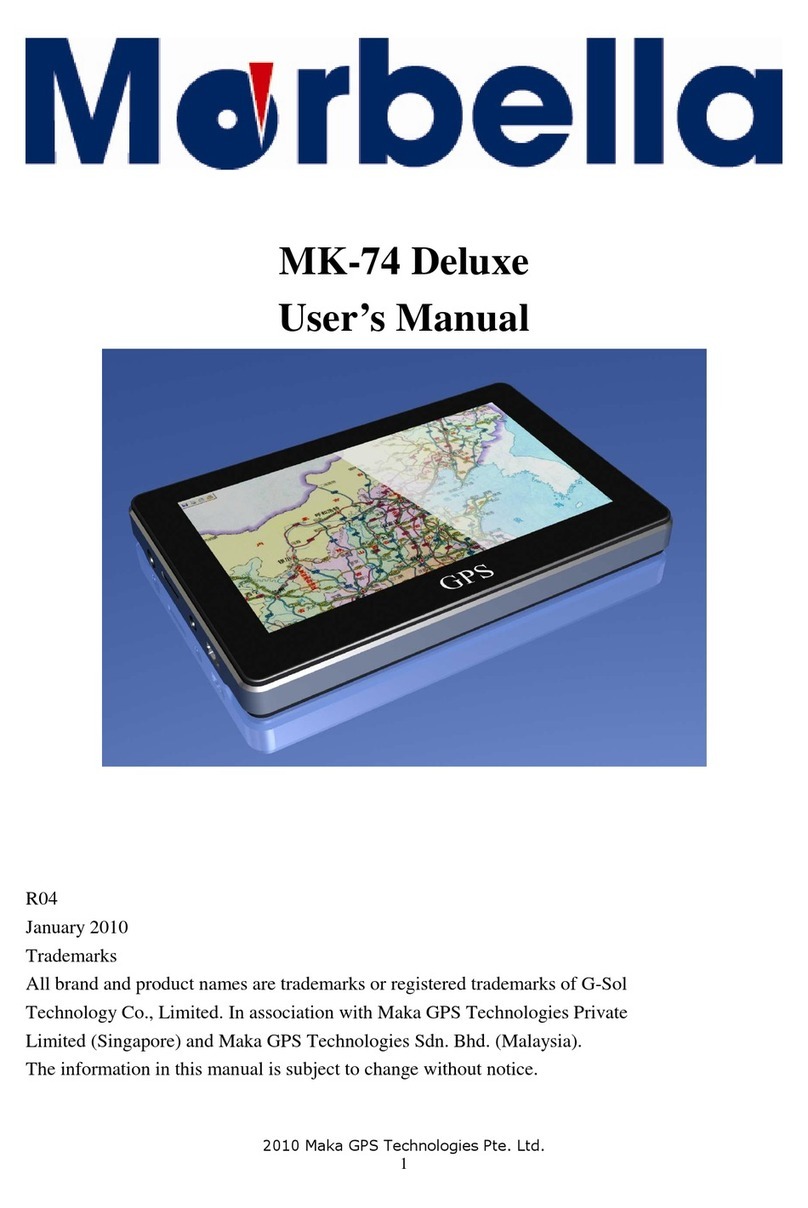
Morbella
Morbella MK-74 Deluxe user manual

Harman Kardon
Harman Kardon guide+play GPS-810 quick start guide
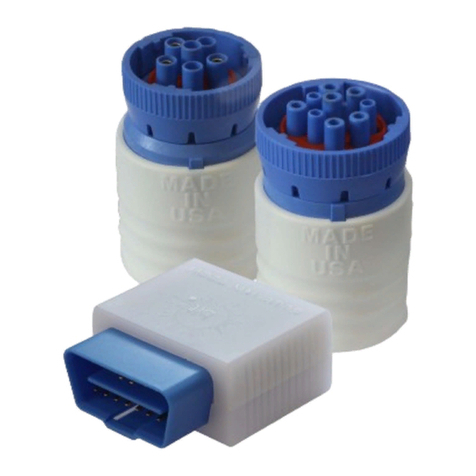
BLUE INK TECH
BLUE INK TECH BIT ELD user manual
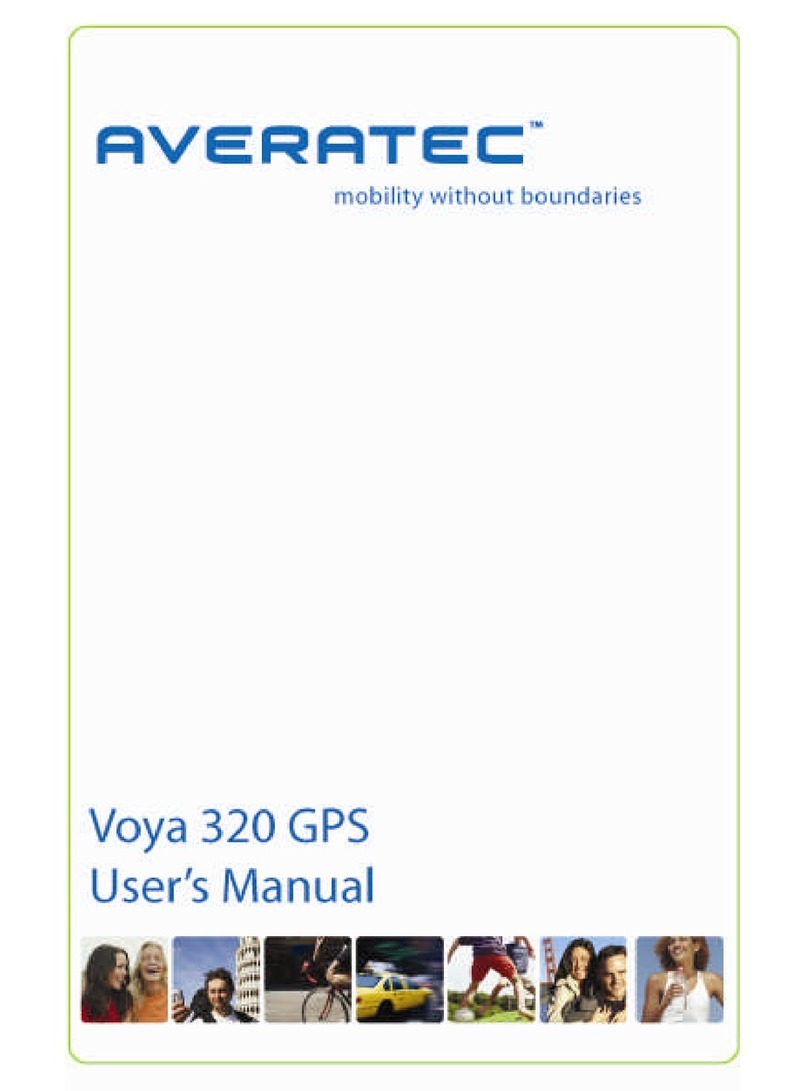
AVERATEC
AVERATEC Voya 320 user manual

NAL RESEARCH CORPORATION
NAL RESEARCH CORPORATION 9602-LP quick start guide
Navman
Navman Tracker 5380 Installation and operation manual

